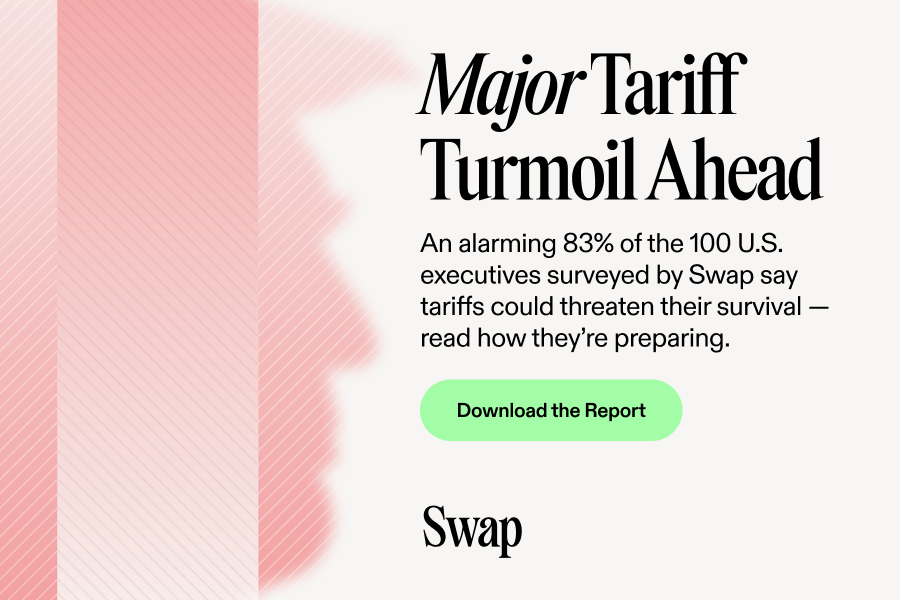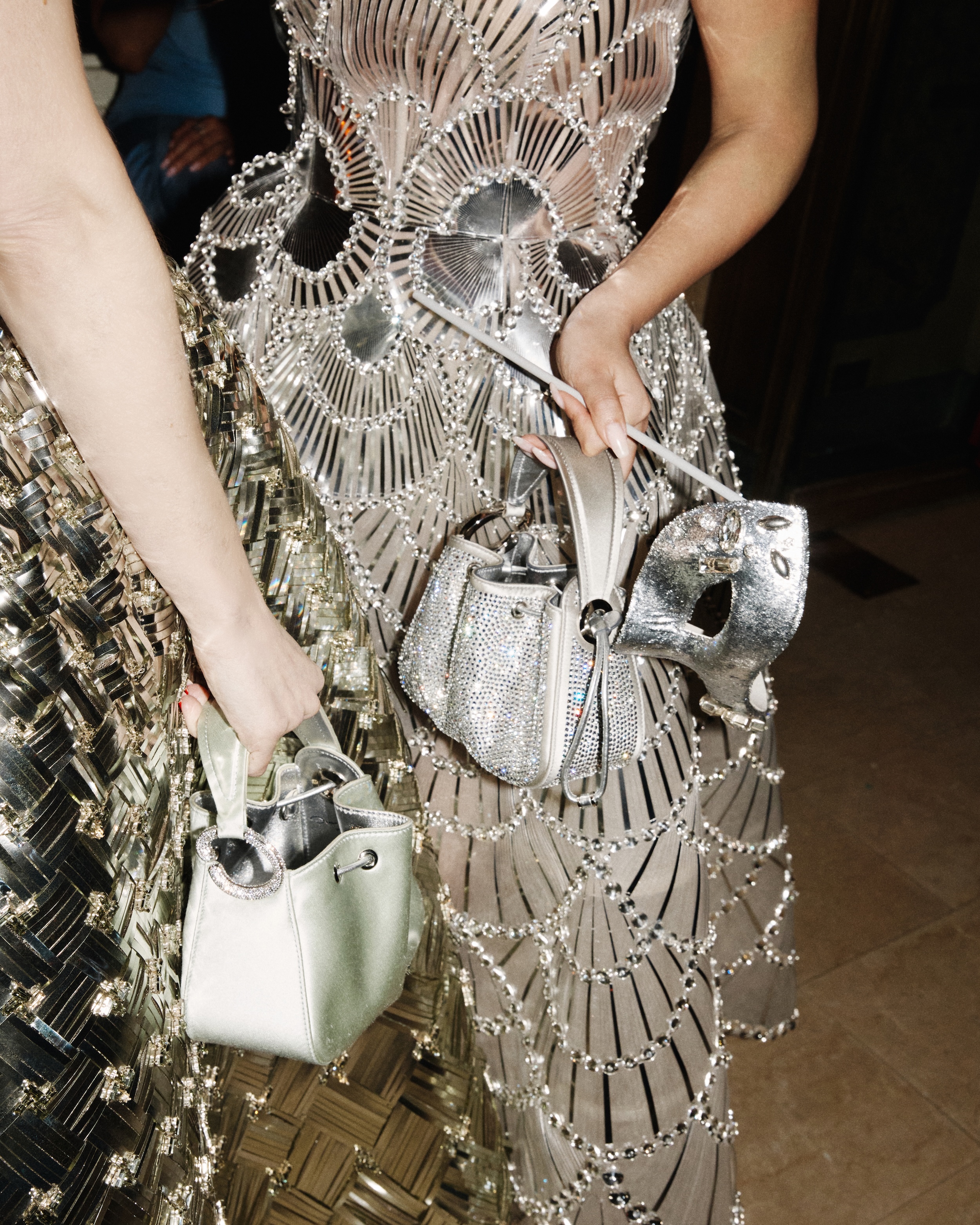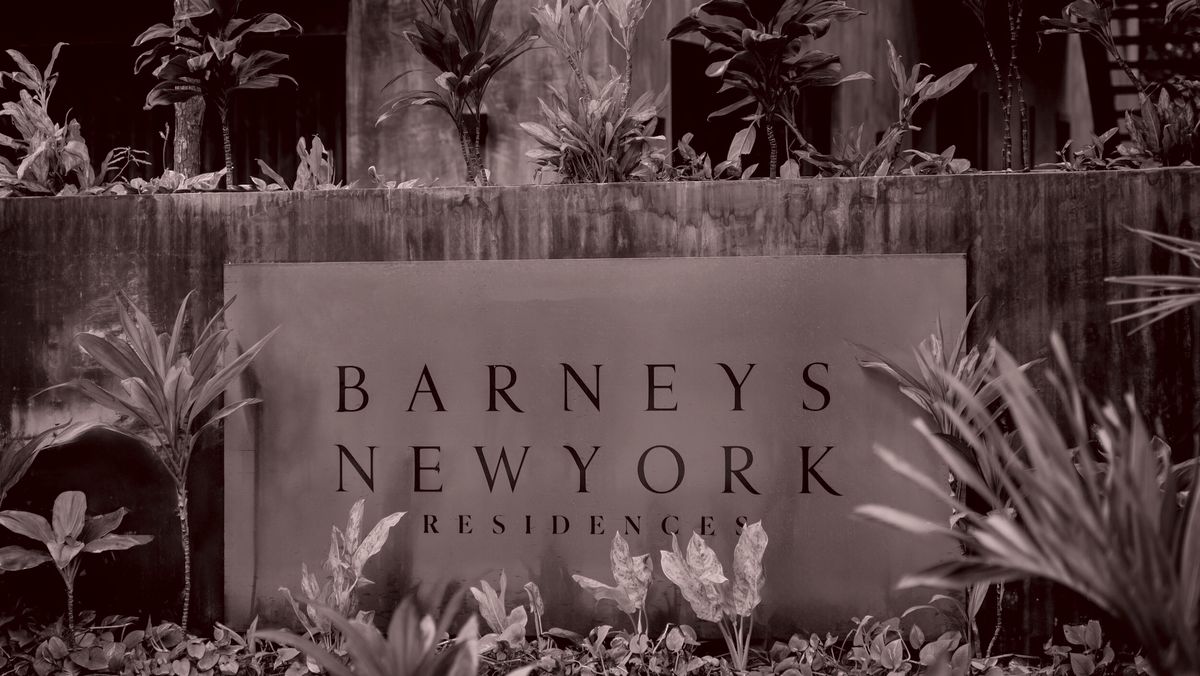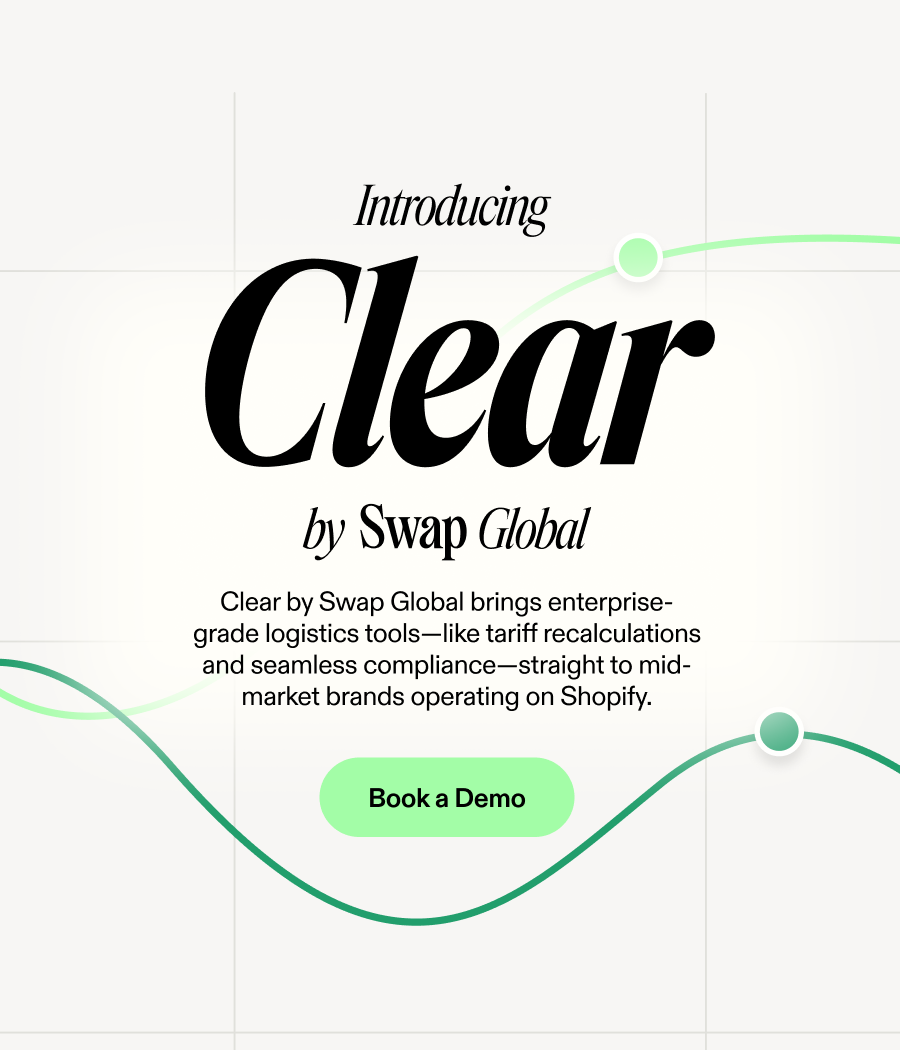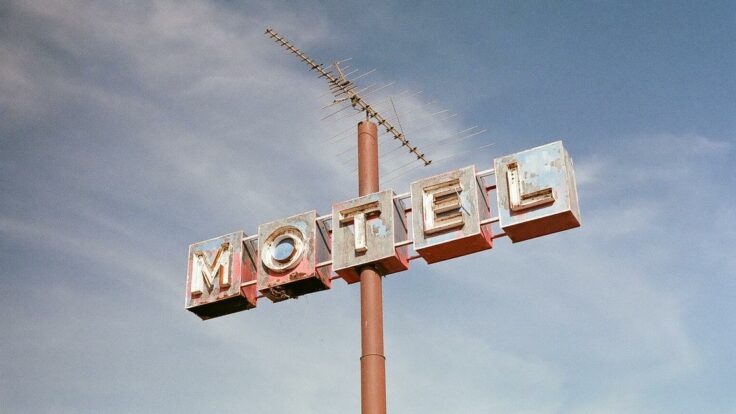Hi, and welcome to Line Sheet. Today, for your reading pleasure, I’ve got lots of intel on what’s
happening with Barneys New York—which still exists, somehow, in some iteration, despite its many deaths. Plus, pertinent info from the one and only Bill Cohan on Saks’ current debt sitch; the stupefying internet obsession with the Boy Smells rebrand; and why every big fashion house needs to figure out what gala to sponsor
other than the Met. Finally, all the niche Vanity Fair staffing news that’s fit to publish!
🚨 Programming note: Tomorrow on Fashion People, I’m joined by the actual coolest person in the world (and HommeGirls creative director) Jen Brill, to discuss the latest and greatest in fashion and retail. We’ll also get into the
never-ending attempt to save Barneys, and the opening of the new HommeGirls store on Walker Street—which, critically, is a mere six-minute stroll from Jinsoon. (HommeGirls also just launched a new volume that you should buy here.)
🛍️ For those of you with the Shoppies: Brands with the word
“Sport” in the name are proliferating. A couple of weeks back, when I did my survey to find the best running tights with pockets, several of you recommended Literary Sport, and Becky Malinsky has featured items from the line
two weeks in a row. Her note on the long shorts got me poking around, and I’m impressed by the performance gear (my personal request
is that they update Outdoor Voices’s long-retired Steeplechase bra). I also went for the white, 100 percent Japanese cotton t-shirt, which they say is “suited for runs”—I believe them!—but I will be wearing it to work. It’s a little boxy, but not in an affected way.
Mentioned in this issue: Barneys, Julie Gilhart, Simon Doonan, Saks, Gene
Pressman, Robbie Myers, Jim Moore, Met Gala, Louis Vuitton, Pharrell Williams, Oscar de la Renta, Alex Bolen, Chloe Popescu, Boy Smells, Sephora, and many more…
|
|
|
A MESSAGE FROM OUR SPONSOR
|
Global tariffs are changing ecommerce…and fast. Swap surveyed 100 ecommerce executives on the current state of global
retail with an alarming 83% of those surveyed expressing concern that new regulations could threaten their business.
How can you stay ahead and stay competitive? Download Swap’s “Tariff Turmoil Report” for a data-driven look at how leading ecommerce brands are preparing for the uncertainty ahead including:
➡️ The
changing trade policies impacting cross-border ecommerce.
➡️ How economists – and consumers – are responding to the change.
➡️ Future-proofed strategies brands are putting into place
Get the report.
|
|
|
Three and a Half
Things You Need to Know…
|
- The
(actual) end of an era: I promise you I will get back on the Vanity Fair E.I.C. beat sooner than soon, but in the meantime, I regret to inform you that executive digital director Mike Hogan, who once probably dreamed of being the editor-in-chief of Vanity Fair, is leaving the Condé Nast–owned pub. His last day is May 9, according to an all-hands email he sent this afternoon. Hogan has been at Vanity Fair for the good part of 25 years
(never forget the Moviefone stint), and was one of the first names to bubble up among the staff when Radhika Jones stepped down last month.
Anyone with any sense knew there was no chance Hogan would be getting that job, and his exit was all but inevitable. For what it’s worth, my sources say that Hogan was probably the second- or third-highest-paid editorial staffer at Vanity Fair, and there was a big E.I.C. meeting last week at Condé Nast where the
powers that be had a tough budget talk. Hogan’s exit will mean one less mouth to feed.
- What you need to know right now about the Saks debt: Last week, my bud (and partner, as we call them in these parts) Bill Cohan, who writes Puck’s financial bible, Dry Powder, mentioned that there would be more to say regarding Saks Global’s $2.2
billion senior secured bond, which was trading at 67 cents on the dollar at a 22 percent yield by the end of last week—and between 53 and 55 cents on Monday. “This is not a good situation for bondholders, who have watched the bond lose a third of its value in the four months since it was issued last December as part of Saks’ $2.7 billion acquisition of Neiman Marcus,” Bill noted in his
Sunday email. It’s also not good for Saks itself, which owes about $120 million in interest on the bonds by the end of June. And that’s in addition to the money Saks already owes vendors, including millions of dollars in back-payments that the company has promised to start making good on—in installments—starting in July.
This is all on top of
the closing of the fulfillment center in Tennessee, the corporate layoffs, and the decision to create a $300 million FILO (first in, last out) credit facility as part of its existing $1.8 billion asset-based lending facility (ABL). In other words, as Bill explained, Saks is doing everything it can to save money, and that usually spooks creditors. “In this period of economic uncertainty, driven by tariffs and the threat of further trade restrictions, we are prudently evaluating
opportunities to strengthen our balance sheet and further bolster liquidity,” a spokesperson told Bill.
On Monday morning, the company met with bondholders. Afterward, Saks Global C.E.O. Marc Metrick told WWD that the company has “between $350 million and $400 million of liquidity today,” adding that the company is “not adding incremental debt capacity to the business.” In a statement, a spokesperson for Saks Global outlined, in great depth, exactly how the group
plans to manage the debt and the broader business.
You should read the rest of Bill’s piece to understand why this is happening, but here’s the TL;DR: The company projected more than $700 million of EBITDA in 2025, based not only on the straight-up business, but also on estimated cost savings from acquiring Neiman Marcus Group. (Hence, the
multiple rounds of layoffs, including 550 corporate employees last week.) And then there were gains projected from an exotic inventory liquidity adjustment.
A large handful of stakeholders—everyone from Amazon to Salesforce and the Rhône Group—did diligence on this deal and convinced themselves that a united Saks Fifth Avenue and Neiman Marcus had the means to make good. But that was before the tariffs catastrophe, and the slowdown in consumer spending, and the letter to
vendors that forced many to stop shipping products to the group, or at least pull back. (If you don’t have goods to sell, you can’t make any money. The company did say that inventory flow is improving.) The majority of the fashion industry wanted this deal to work, and still do. Alas, as we all know, hope is not a business plan.
- Rachel on the candle scandal: One of the strangest and most delightful beauty industry micro-dramas so far
this year is the absurd controversy surrounding the rebranding of Boy Smells. After falling on hard times (declining sales, diminished awareness, etcetera), Boy Smells relaunched at Sephora in early April. Some of the line’s original fans and early adopters were pissed, accusing the label of abandoning its gay roots, while a number of outlets declared the reboot a failure. The Cut, in particular, published a scathing review of the brand’s new gourmand and “sugary musk” scents, like Coco Cream
and Sugar Baby, which were not a hit with the site’s millennial writers and editors.
Of course, these reviewers largely missed the point. The core audience for the Boy Smells relaunch isn’t readers of The Cut but rather younger, Gen Z consumers. And among the cohort that buys cupcake-scented body mists, the reboot seems to be a hit. Despite the negative coverage, I’m hearing that Boy Smells 2.0 is performing well, with more products sold in three weeks than during an
entire quarter last year. (I previously reported that the Boy Smells relaunch surpassed Sephora’s first month projections in three days.)
It’s nearly impossible to win with a rebrand in beauty. When a new group of investors acquired Boy Smells from its founders through a distressed sale, in 2023, the brand had seven-figure debts and was dangerously close to closing down. (I heard sales dropped from around $20 million to about $10 million at the time of the deal.) The
Sephora-friendly rebrand was an attempt to make the line more commercially viable, and adhere with fragrance trends today. Without new owners and an overhaul, Boy Smells would have closed down years ago. ––Rachel Strugatz
- Are you my Met Gala?: This year, the Metropolitan Museum of Art’s annual Costume Institute gala is underwritten by Louis Vuitton. (Pharrell Williams, the brand’s creative director for menswear, is a
co-chair.) Of course, while Louis Vuitton stands to benefit handsomely from the association—at least if social media mentions are the goal—the brand didn’t need to underwrite the dinner in exchange for virality. After all, LV can buy as many tables as it wants, and dress dozens of attendees. And in recent years, its red carpet strategy has changed dramatically—widening the pool of associated celebs, and tweaking the designs to feel more red carpet–friendly, all without losing womenswear
designer Nicolas Ghesquière’s flavor.
But what about brands that don’t have that sort of budget, or simply don’t want to invest too much in an event that is so highly trafficked by other brands? (Met Gala sponsorships can get into the seven figures, and a table can cost more than $350,000.) For years, Gucci has invested in the LACMA Art+Film Gala, which is like a chiller, West Coast version of the Met, except nearly all of the important people are
wearing Gucci. Dior has partnered with the Brooklyn Museum on its Artists Ball. Meanwhile, Oscar de la Renta chose the annual Un Ballo in Maschera gala in New York, hosted by Save Venice, an American organization formed to literally “preserve the artistic heritage” of the Italian city.
|
Photo: Brett Warren/Courtesy of Oscar de la Renta
|
- This
year, Oscar de la Renta C.E.O. Alex Bolen and new C.M.O. Chloe Popescu took a more strategic, if slightly risqué, approach to the Save Venice ball. The easy part was inviting a table of V.I.C.s and notable friends of the house, including Tiffany Haddish, Padma Lakshmi, and Nicky Hilton. But Popescu also mixed in a slew of TikTok creators, including
Becca Bloom, Meredith Hayden, Linoya Friedman, and
Lilly Sisto. The brand encouraged them to not only post about Oscar and the gala from their multimillion-follower accounts, but also tout its well-liked (and well-priced) costume jewelry and novel handbags for #jewelrytok.
Few luxury brands have figured out how to use TikTok to convert engagement into actual sales, but Oscar has always been a little more open to
experimenting than many of its European competitors. When I chatted with Popescu about it a couple of days before the party, she said that it was all very much a test, but a deliberate one. Meanwhile, the more targeted invite list could help amplify their social reach, and possibly even convert some followers to customers.
|
|
|
The late, great New York department store lives on—well, sort of, and in name only, really,
inside a few Saks stores, a gated community in Tulum, and a 2010s zombieland in Tokyo. Efforts to resurrect the brand have sputtered and failed, and maybe for good reason, but that hasn’t stopped people from trying.
|
|
|
The ghost of Barneys New York haunted me on my recent trip to Tokyo. First, I ran into a guy on the street
wearing a branded sweatshirt (he obliged my request for a photo). On my last day, I walked by the brand’s outpost in Roppongi, a fancy neighborhood where a lot of banker expats live when they first move to the city. It was too early for the store, operated through a Japanese partner, to be open. Standing under the awning—a relic of a 2011 rebrand to black from red—and a peek inside was more than enough. The ever-recognizable typeface was still being used throughout, as were the marble backdrops,
reminiscent of luxury’s mid-2010s boom years.
The Japanese love taking American brands, both actually dead and barely alive, and resuscitating them in a flattened, wholly unemotional manner. In one week alone I was confronted by City Bakery, Dean & DeLuca, and Buttermilk Channel—all New York food world mainstays that have since closed—as well as lobotomized versions of Brooks Brothers, L.L.Bean, and Ron Herman. There is nothing wrong with these places—I endorse the Dean & DeLuca
avocado toast—except for the fact that they have no soul.
|
|
|
A MESSAGE FROM OUR SPONSOR
|
Tariffs are coming fast — but Swap moves faster. Built for ecommerce brands that manufacture in China and sell
cross-border, Clear by Swap Global is your B2B2C compliance solution for surviving—and thriving—in this new reality.
➡️ Clear goods at fair market (not retail) value
➡️ Reduce tariff exposure via intra-company transfers
➡️ Get fast 2-day delivery from UK/EU warehouses
➡️ Achieve
full compliance & eliminate surprise border fees
Margins are shrinking and complexity is growing. Clear by Swap Global helps your brand stay compliant.
Get a demo today.
|
|
|
The most depressing example, though, is Barneys. Since the department store’s intellectual property was
acquired by the brand taxidermy enterprise Authentic Brands Group in 2019, just months after it filed for bankruptcy, ABG has monetized the downslope. Barneys’ brand is deployed as a concept of sorts inside former competitor Saks Fifth Avenue, as part of a collaboration with another ABG-owned relic (the proto-fast-fashion chain Forever 21), and as the moniker for a group of residences located in a gated community in Tulum.
It’s pretty gross, partly because it has to be: ABG may
be a brand savior, but the company is also a vulture, picking every little bit of meat off the bone for economic value. And that’s partly because, regrettably, this is what actually works for the business. The truth is that the very proposition of Barneys—a 0.01 percent Manhattan-rooted department store-cum-brand with cosmopolitan taste—was going to be fundamentally unprofitable in the e-commerce era, no matter who managed the business. ABG’s only truly on-brand attempt to revive the business—a
temporary Nolita store that opened last September, featuring Barneys’ former fashion director, Julie Gilhart, and the involvement of Simon Doonan—had goodwill but no real business objective. (It was sponsored, curiously, by Hourglass Cosmetics.) A relaunched magazine—with former Elle editor-in-chief Robbie Myers consulting, and former GQ creative director Jim Moore and Doonan chipping in, too—has yet to
materialize.
Right now, ABG’s biggest bet is on a Barneys New York private label relaunch. I’m told it was originally intended to happen inside Saks Fifth Avenue, but that idea has been scrapped, and ABG is looking to distribute far more widely—not at other upscale department stores like Saks Global–owned Neiman Marcus Group, but rather on a mass level. As in, warehouse-club mass. “Instead of an $800 cashmere jacket, it’ll be a $200 cashmere jacket … sold at Costco,” as one
insider put it.
|
And yet there isn’t a day when I don’t hear from someone in the industry that they wish Barneys could come
back. I interpret the passion for a resurrection—ignited, most recently, by the opening of the Printemps store near Wall Street—as an appetite, and need, for better stores. Last week, I sought the opinion of Gene Pressman, whose family owned the business and whose new book, They All Came to Barneys, hits shelves September 2. He said that he believes it can be done, but only on a far
more personal level. “Retail’s been dying on the vine since the ’90s, way before the internet,” he said, noting the increasing lack of surprising product, fueled by industry consolidation. He conceded, as Saks Global C.E.O. Marc Metrick and I discussed a few weeks back, that the current multibrand model doesn’t work. Almost
everything gets marked down, making margins too slim, and only a few brand behemoths can afford to succeed, even when things are good and people are spending.
For Pressman, one of the best stores around these days is Desert Vintage, the Orchard-Street-by-way-of-Tucson shop that sells plenty of stuff that was originally sold at Barneys 30, 40 years ago. There’s archival Alaïa, Romeo Gigli, Yohji Yamamoto, and Helmut Lang, etcetera. And lots of Geoffrey Beene and Calvin Klein from the
1970s—much of which could pass as current.
|
|
|
Desert Vintage is by no means affordable—the prices are steep, even for the most pristine secondhand
goods—but the selection is special. Shopping there provides a dopamine hit that purchases at stores like Barneys used to offer. Pressman and I agree that, for someone with the financial means to invest, there is still an opportunity in multibrand retail. The challenges, though, are manifold. People want stores, but they don’t necessarily want to shop in them. How does an owner adjust the assortment for showrooming, as they call it? Every store is, in one way or another, an advertisement
for the internet, where the same item is almost guaranteed to be available for less money.
You can sell one-off or hard-to-find pieces, sure, but then you’re viewed as a special-occasion destination, not a solution. And you can attempt to create a third place, as Barneys did with Freds, which was a real scene, but the margins at restaurants are even slimmer than in retail. It’s not going to be easy. But someone should try it, anyway. Because everyone misses Barneys.
|
Yes, I heard about protestors outside of the CAA–Condé Nast White House Correspondents’ Dinner kickoff party
“shouting that Roger Lynch is an animal abuser.” I feel a little bad for him! [Dylan’s Twitter]
Silvia Venturini Fendi’s reign continues: There will be another Fendi coed show in September.
[WWD]
Stefano Tonchi hired the M/M guys to reimagine Harper’s Bazaar Italia. [BoF]
Bernard
Arnault is reportedly buying L’Opinion, a liberal paper in France, adding to LVMH’s growing media cluster. [La Lettre]
LVMH was downgraded from “buy” to “hold” by HSBC. Other analysts have downgraded it to “market perform” from “market outperform,” which is the same
diff. [Business Insider]
If you’re not following the whole TikTok situation where Chinese manufacturers implore consumers to buy products direct from the factory—claiming they are producing the items that luxury brands sell—this is a good explanation.
[The New York Times]
|
And finally… I did a very L.A. thing on Saturday and went to see Sinners at the Vista. It’s
open seating, so by the time we arrived at 7:10 p.m. for a 7:30 p.m. start time, there was a queue wrapping around Hillhurst. There was a lot to look at, including a Haim fanny pack worn cross-body, and a Mejuri tote bag. I will forever be fascinated by people’s choices.
Until
tomorrow,
Lauren
P.S.: We are using affiliate links because we are a business. We may make a couple bucks off them.
|
|
|
Need help? Review our FAQ page or contact us for assistance. For brand partnerships, email ads@puck.news.
You received this email because you signed up to receive emails from Puck, or as part of your Puck account associated with . To stop receiving this newsletter and/or manage all your email preferences, click here.
|
Puck is published by Heat Media LLC. 107 Greenwich St, New York, NY 10006
|
|
|
|


